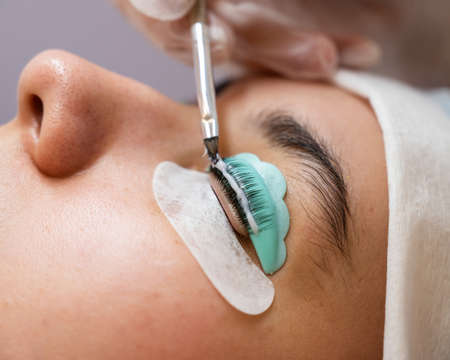1. Introduction: Understanding Hair Removal Needs in the U.S.
In the United States, hair removal is more than just a personal care routine—it’s part of daily life and often tied to social norms, fashion trends, and self-confidence. From smooth legs to well-groomed brows, Americans have a variety of preferences when it comes to body hair, influenced by culture, media, and even professional expectations. Over the years, the demand for effective, long-lasting hair removal solutions has grown rapidly, especially as people look for ways to simplify their routines and feel their best.
Why does hair removal matter so much in the U.S.? For many, it’s about feeling clean, confident, and ready for any occasion—whether that’s hitting the beach or attending an important meeting. The beauty industry responds with a wide range of options, from quick fixes like shaving to high-tech treatments like laser hair removal and electrolysis. Each method comes with its own set of promises and drawbacks, leaving consumers to weigh convenience against results.
Let’s take a closer look at how Americans are choosing to manage unwanted hair today:
| Hair Removal Method | Popularity in the U.S. | Main Reasons for Use |
|---|---|---|
| Shaving | Very Common | Quick, cheap, easy for at-home use |
| Waxing | Popular | Smoother skin, longer-lasting than shaving |
| Creams/Depilatories | Moderate | Painless option for sensitive skin |
| Laser Hair Removal | Increasingly Popular | Semi-permanent results, less maintenance over time |
| Electrolysis | Niche but Growing | Permanently removes hair, suitable for all skin types and colors |
As American consumers become more informed and tech-savvy, their expectations around hair removal are evolving. Many are searching for methods that not only deliver real results but also fit into their busy lifestyles. This focus on effectiveness and convenience is driving innovation—and stirring up debate about which solution truly stands out. In the next sections, we’ll break down how electrolysis compares with other popular options so you can make the best choice for your needs.
2. How Electrolysis Works: Science Behind the Technique
Understanding the Electrolysis Process
Electrolysis is a hair removal method that targets the root of each hair follicle with precision. During an electrolysis session, a trained professional inserts a very fine probe into the hair follicle. Then, a small electric current is delivered through the probe, which destroys the follicles ability to grow new hair. This process works on all skin tones and hair types, making it a versatile option compared to other methods like laser hair removal, which can be less effective on lighter hairs or darker skin tones.
FDA Approval and What It Means for You
The U.S. Food and Drug Administration (FDA) recognizes electrolysis as the only permanent hair removal method. This means that, unlike waxing or shaving—which only offer temporary results—electrolysis is backed by science and regulatory approval for delivering long-lasting smoothness. The FDA approval gives consumers peace of mind that this technique has met strict safety and efficacy standards in the U.S.
Comparison Table: Electrolysis vs. Other Hair Removal Methods
| Method | Permanence | Suitable for All Skin Types? | Pain Level | FDA Approved as Permanent? |
|---|---|---|---|---|
| Electrolysis | Permanent | Yes | Mild-Moderate | Yes |
| Laser Hair Removal | Semi-Permanent/Long-Term Reduction | No (Best for light skin/dark hair) | Mild-Moderate | No |
| Waxing | Temporary (3-6 weeks) | Yes | Moderate | No |
| Shaving | Temporary (Days) | Yes | Mild | No |
| Chemical Creams | Temporary (Days-Weeks) | No (Can irritate sensitive skin) | Mild-Moderate (Possible irritation) | No |
What Users Typically Experience with Electrolysis
Many Americans who choose electrolysis appreciate its track record for permanent results. The most common experience is a series of sessions spaced a few weeks apart. Each session focuses on treating as many follicles as possible in a specific area. While some people describe mild discomfort during treatment—often compared to a tiny pinch or heat sensation—the majority find it manageable, especially since topical numbing creams are available if needed.
The number of sessions required varies based on the size of the area being treated and individual hair growth cycles, but users consistently report smoother skin over time and an end to routine shaving or waxing appointments. This makes electrolysis particularly attractive for those seeking a low-maintenance solution with proven effectiveness.

3. Popular Alternatives: Shaving, Waxing, and Laser Hair Removal
Shaving
Shaving is often the first hair removal method people try. It’s quick, easy to do at home, and only requires a razor and shaving cream. Shaving simply cuts hair at the skin’s surface, so hair grows back relatively quickly—usually within a couple of days.
Pros and Cons of Shaving
| Pros | Cons |
|---|---|
| Affordable and accessible | Results are short-lived |
| Painless (if done properly) | Can cause nicks, cuts, or razor burn |
| No appointments necessary | Potential for ingrown hairs |
Waxing
Waxing removes hair from the root using hot or cold wax that is pulled off quickly, taking the hair with it. It can be done at home or in a salon. Results typically last 3-6 weeks, but regrowth varies based on individual hair cycles.
Pros and Cons of Waxing
| Pros | Cons |
|---|---|
| Smoother skin for longer periods than shaving | Painful during and after treatment |
| Slower hair regrowth over time | Possible irritation or allergic reactions |
| Can be done professionally or DIY style | Might cause ingrown hairs or redness |
Laser Hair Removal
Laser hair removal uses concentrated light beams to target pigment in hair follicles, damaging them to reduce future growth. This option is popular for those seeking longer-lasting results without daily maintenance. Multiple sessions are required for optimal results.
How Laser Hair Removal Compares to Electrolysis and Other Methods (Cost & Effectiveness)
| Method | Average Cost per Session* | Treatment Frequency Needed* | Main Benefit |
|---|---|---|---|
| Shaving | $1–$5 (razor/cream) | Every 1–3 days | Fast & inexpensive; DIY anytime |
| Waxing (Salon) | $30–$80 (per area) | Every 3–6 weeks | Smoother skin & slower regrowth vs. shaving |
| Laser Hair Removal | $200–$400 (per session) | 6–8 sessions plus maintenance | Long-lasting reduction; less daily upkeep |
*Costs and frequency vary by body area and provider; numbers reflect typical ranges in the U.S.
Main Takeaways on Alternatives to Electrolysis
- Shaving: Best for convenience but requires frequent upkeep.
- Waxing: Longer-lasting results but involves pain and possible skin irritation.
- Laser Hair Removal: Offers semi-permanent reduction but comes with higher upfront costs and works best on certain skin/hair types.
When weighing electrolysis against these popular alternatives, think about your budget, desired results, pain tolerance, and willingness to keep up with regular treatments. Each method has its own set of pros and cons that might make it a better fit depending on your lifestyle and goals.
4. Comparing Effectiveness: Permanent vs. Temporary Results
Understanding How Long Hair Removal Methods Last
When it comes to hair removal, not all treatments deliver the same results or last as long. Let’s break down how electrolysis compares to other common methods like laser hair removal, waxing, shaving, and depilatory creams in terms of permanence, how well they work for different skin and hair types, and how often you need to repeat the process.
Permanent vs. Temporary: What’s Really Permanent?
| Method | Is It Permanent? | How Often Is Treatment Needed? |
|---|---|---|
| Electrolysis | Yes (FDA-approved) | Multiple sessions at first; usually no maintenance once complete |
| Laser Hair Removal | Semi-permanent (long-term reduction) | 6-8 sessions, then touch-ups every 6-12 months |
| Waxing | No (temporary) | Every 3-6 weeks |
| Shaving | No (very temporary) | Every 1-3 days |
| Creams (Depilatories) | No (temporary) | Every 1-2 weeks |
Efficacy for Different Skin and Hair Types
The effectiveness of each method can vary depending on your unique combination of skin tone and hair color. Electrolysis is considered “color-blind,” meaning it works on any skin color and any hair type—blonde, gray, red, or dark. Laser hair removal is most effective for people with light skin and dark hair because the laser targets pigment. Waxing, shaving, and creams work regardless of skin or hair color but don’t address the root for lasting results.
| Method | Works on All Skin Types? | Works on All Hair Colors? |
|---|---|---|
| Electrolysis | Yes | Yes |
| Laser Hair Removal | No (best on light skin) | No (best on dark hair) |
| Waxing/Shaving/Creams | Yes | Yes |
Treatment Frequency: What to Expect Over Time
If you’re looking for a one-and-done solution, electrolysis is as close as it gets—though you’ll need several initial sessions to catch all hairs in their growth cycles. After that, touch-ups are rare. Laser requires fewer initial treatments than electrolysis but isn’t truly permanent; you’ll likely need annual maintenance. Waxing, shaving, and creams are quick fixes but require frequent upkeep.
The Takeaway: Matching Your Needs to Your Method
If lasting results across all skin tones and hair colors matter most to you—and you’re willing to commit upfront time—electrolysis stands out. If convenience or pain tolerance is more important, temporary methods might fit better into your routine.
5. Safety, Side Effects, and Aftercare Considerations
Risks and Side Effects of Popular Hair Removal Methods
When it comes to choosing the most effective hair removal method, safety and side effects play a big role—especially in the fast-paced American lifestyle where we juggle work, fitness, family, and social commitments. Here’s a clear comparison of common risks and side effects for electrolysis, laser hair removal, waxing, and shaving:
| Method | Common Risks | Downtime | Skin Health Issues |
|---|---|---|---|
| Electrolysis | Redness, swelling, rare scarring or infection if not performed properly | Minimal (usually resolves within hours) | Mild irritation; safe for all skin tones and hair types |
| Laser Hair Removal | Temporary redness, swelling, blistering, pigment changes (mostly in darker skin) | 1-3 days for sensitive skin; avoid sun exposure post-treatment | Not ideal for light hair; risk of hyperpigmentation or burns if done incorrectly |
| Waxing | Pain, redness, ingrown hairs, possible burns with hot wax | A few hours to a day depending on sensitivity | Irritation; can worsen eczema or sensitive skin issues |
| Shaving | Nicks, cuts, razor burn, ingrown hairs | No downtime but may require daily maintenance | Can cause repeated irritation with frequent use |
Aftercare Tips Tailored for Busy Americans
No matter which method you choose, proper aftercare is key to maintaining healthy skin and minimizing downtime. Here are some simple aftercare steps that fit into even the busiest routines:
- Keep it Clean: Gently cleanse treated areas to avoid infection.
- Moisturize: Use fragrance-free lotion to soothe any irritation.
- Avoid Sun Exposure: Especially important after electrolysis or laser treatments—use sunscreen or cover up when outdoors.
- No Picking: Don’t scratch or pick at treated areas to prevent scarring or dark spots.
- Avoid Sweating: Skip intense workouts for 24 hours after treatment to let your skin recover.
- Soothe with Cool Compresses: If you notice redness or swelling, applying a cool pack can help bring down inflammation.
The Bottom Line on Skin Health & Lifestyle Fit
If your schedule is packed or you’re always on-the-go—a situation many Americans know all too well—consider how much downtime you can realistically handle. Electrolysis generally has minimal downtime and fewer long-term risks if performed by a licensed professional. Laser can be quick but needs more caution for certain skin types. Waxing and shaving are convenient but may lead to ongoing irritation for those with sensitive skin. Whatever you decide, factor in your skin type, lifestyle demands, and willingness to follow through with proper aftercare for the best results.
6. Cost and Convenience: What U.S. Consumers Need to Know
When it comes to hair removal, American consumers want options that fit their lifestyles and budgets. Let’s break down the costs, accessibility, and convenience of electrolysis compared to other popular methods like laser hair removal, waxing, and shaving.
Upfront and Long-Term Costs
| Method | Upfront Cost | Ongoing/Long-Term Cost |
|---|---|---|
| Electrolysis | $30–$200 per session (multiple sessions needed) | Permanent results; maintenance rarely required |
| Laser Hair Removal | $200–$400 per session (multiple sessions needed) | May require annual touch-ups; not always permanent |
| Waxing | $20–$100 per visit | Needs repeating every 4–6 weeks |
| Shaving | $5–$25 for razors & supplies | Frequent purchases; lifelong cost adds up |
Access to Providers
Electrolysis: Certified electrologists can be found in most urban areas, but rural access may be limited. State licensing varies, so check local regulations.
Laser Hair Removal: Widely available at med spas and dermatology clinics across the U.S.; some states have stricter regulations on who can operate lasers.
Waxing: Offered at salons almost everywhere, from big cities to small towns.
Shaving: No provider needed—can be done at home anytime.
The Convenience Factor
| Method | Time Commitment | Pain Level* |
|---|---|---|
| Electrolysis | Sessions last 15–60 minutes; multiple visits required for lasting results | Mild to moderate discomfort (numbing cream can help) |
| Laser Hair Removal | Treatments are quick but spaced weeks apart; several sessions needed for best outcome | Mild discomfort, often described as a rubber band snap |
| Waxing | Takes about 15–45 minutes per session; needs frequent repeats | Moderate pain during hair removal process |
| Shaving | A few minutes per session; must be done every few days for smoothness | Painless if done carefully; risk of nicks or irritation |
*Pain tolerance varies by individual.
For many Americans, the choice comes down to balancing upfront investment, long-term savings, ease of access, and how much time they’re willing to spend on hair removal. Electrolysis offers permanence but requires commitment and patience. Other methods may seem cheaper or easier in the short term but add up over time—both in cost and effort.
7. Conclusion: Which Hair Removal Method Is Best for You?
Choosing the right hair removal method can feel overwhelming, especially with so many options available in the U.S. market. Let’s break down the key takeaways from comparing electrolysis and other popular hair removal methods to help you decide what fits your lifestyle, budget, and long-term goals.
Quick Comparison of Hair Removal Methods
| Method | Effectiveness | Pain Level | Cost Over Time | Best For |
|---|---|---|---|---|
| Electrolysis | Permanent | Moderate | High upfront, low long-term | All skin & hair types, small areas, those seeking permanent results |
| Laser Hair Removal | Semi-permanent (needs maintenance) | Mild to moderate | Medium to high | Larger areas, lighter skin with dark hair, quick results |
| Waxing | Temporary (3-6 weeks) | Moderate to high | Low to medium ongoing | All skin types, larger or small areas, convenience seekers |
| Shaving | Very temporary (1-3 days) | Low (may cause irritation) | Very low ongoing | All skin types, quick fixes, pain-sensitive individuals |
| Creams/Depilatories | Temporary (1-2 weeks) | Mild (possible irritation) | Low ongoing | Sensitive areas, pain-free seekers, short-term solutions |
Main Insights for American Consumers
- If you want a truly permanent solution: Electrolysis is FDA-approved as the only permanent hair removal method. It’s ideal for people who are ready to invest time and money upfront for lasting results.
- If you prefer speed and less discomfort: Laser hair removal offers quick sessions and works best on light skin with dark hair. It’s not fully permanent but reduces hair growth significantly.
- If you’re looking for affordability and flexibility: Shaving and creams are wallet-friendly but need frequent upkeep. Waxing sits in the middle—longer-lasting than shaving but not permanent.
- If you have sensitive skin or specific concerns: Always do a patch test before trying new products or methods, especially with depilatories or waxing.
Your Personalized Approach Matters Most
The “best” method really depends on your needs. If you want something permanent and are okay with multiple sessions and a bigger investment, electrolysis is hard to beat. For busy Americans juggling family, work, and fitness routines, shaving or creams might be more practical day-to-day. If you’re after a balance of effectiveness and convenience for larger areas like legs or back, laser could be your go-to.
Practical Tips Before You Decide:
- Tally up your total costs—including touch-ups—over a year or two for each method.
- Think about how much time you’re willing to spend on upkeep.
- If safety is a concern, choose board-certified professionals and reputable salons—especially for electrolysis and laser treatments.
No matter which route you choose, understanding your priorities will help you achieve smoother skin with less stress.


